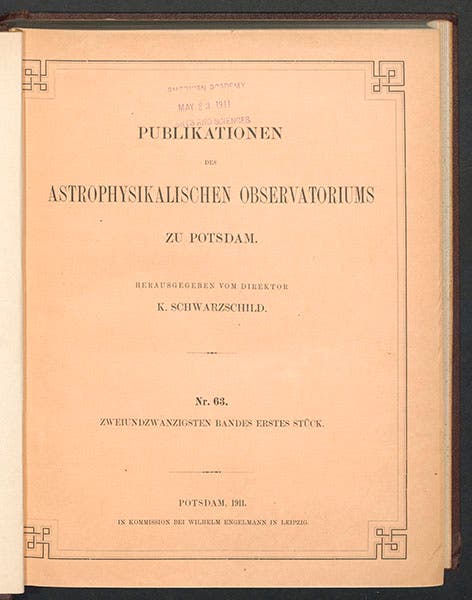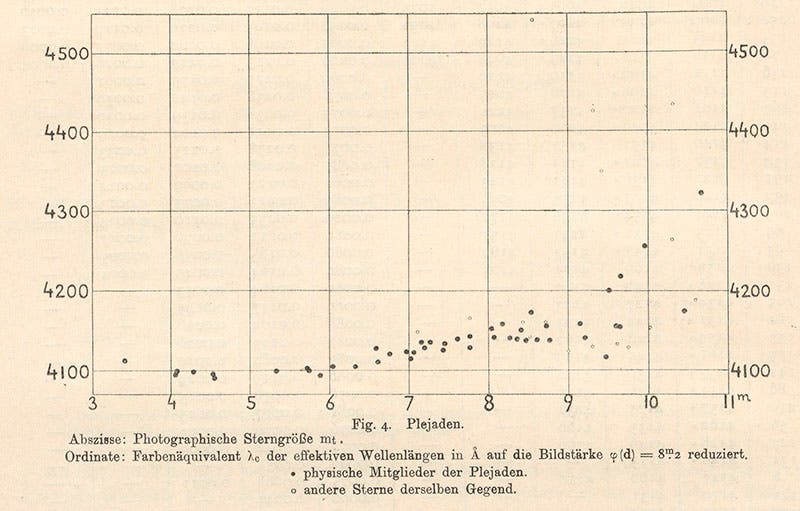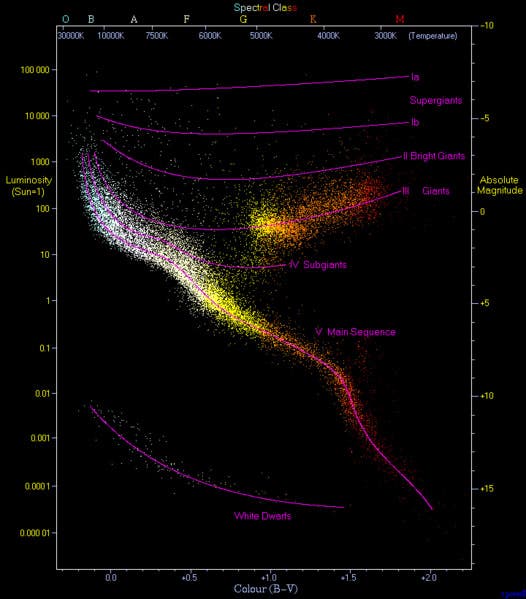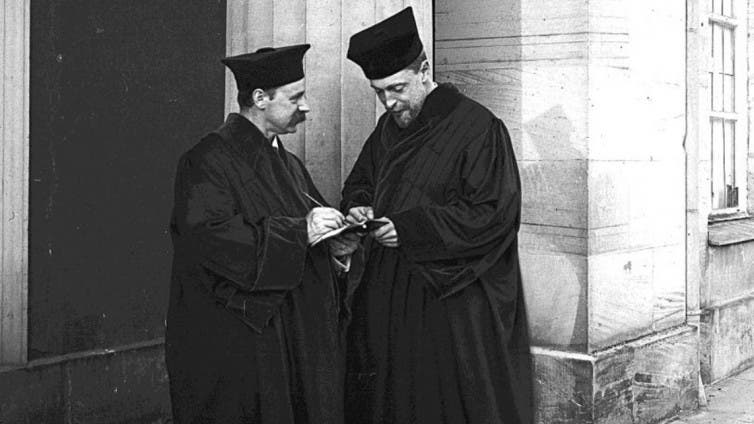Scientist of the Day - Ejnar Hertzsprung
Ejnar Hertzsprung, a Danish astronomer, was born Oct. 8, 1873. Hertzsprung came of astronomical age at the very time that Antonia Maury and Annie Jump Cannon at Harvard College Observatory were publishing the results of their spectroscopic classification of the stars as part of the Henry Draper Memorial. Miss Maury had determined that some of the redder stars had quite different spectra from other red stars, sporting sharp hydrogen lines, and she tried to call these c-type stars. Her boss, Edward Pickering, would have none of this and preferred a simpler linear system. Hertzsprung began his own studies in the early 20th century and in 1905 published a paper, “Radiation from stars,” in a German photographic journal, in which he argued that Maury was right – there were two kinds of red stars, some of them small and close, others gigantic, luminous, and very far away. Hertzsprung had discovered dwarf and giant stars. In 1908, he wrote Pickering and argued for a more sophisticated classification system, allowing two stars to have the same temperature yet have different sizes and luminosities, but Pickering was not convinced. Since Hertzsprung’s first paper is fairly scarce, we show here the first page (second image). Note that he mentions Maury and Cannon in the very first sentence.
Hertzsprung started studying clusters of stars, like the Hyades and Pleiades, trying to determine their distance so he could make accurate estimates of their true luminosity, and he found that when he compared the color and magnitude of stars in the same cluster, there were interesting correlations between the two variables – stars of the same color (spectral type) tended to have similar magnitudes. In 1911, he published the very first diagrams in which the color and magnitude of groups of stars were graphically compared. We see one of those in our fourth image.
Meanwhile, in the United States, Henry Norris Russell at Princeton had also begun comparing the color (spectral type) and luminosity of stars, discovering that the O and B stars (to use the new Harvard spectral classification system) were uniformly very luminous, the F and G stars (like our Sun) were of middling luminosity, and the M and R stars, the red stars, were (with some exceptions, as Hertzsrpung had already discovered) not very luminous at all. If one graphed all the stars with known luminosity onto a chart where luminosity is the vertical coordinate and spectral type is the horizontal coordinate, most of the stars line up on a reverse diagonal running from upper left to lower right.
Russell’s diagram seemed to be a very handy scheme for organizing the stars, and he revealed it at a joint meeting of the American Astronomical Society and the American Association for the Advancement of Science on Dec. 30, 1913. The talk was then published in Nature in three successive issues beginning April 30, 1914; Russell’s diagram first appeared in print in the May 7 issue (first image). It would prove to be an exceptionally versatile tool for discovering stars that are NOT normal, which means that they do not lie along the reverse diagonal that would later be called the Main Sequence.
When it was learned that Hertzsprung had already discovered the luminosity-spectral type relationship for the Pleiades and Hyades clusters, and had identified the anomalous red giant stars that occupy the top right of the graph, it was decided to call the new diagram a Hertzsprung-Russell diagram, or, more commonly, an H-R diagram, and it has been in wide-spread use for over a century now. Any student of stellar astronomy encounters the H-R diagram very early in his or her studies. We show here, in addition to the first H-R diagram, a modern one (fifth image). The red giant stars that Hertzsprung discovered are at upper right, directly above the red dwarf stars on the Main Sequence that he was also the first to identify. The white dwarfs at bottom left were first identified by Walter Sydney Adams in 1914-15.
There are very view photographs that present a younger Ejnar Hertzsprung. We found this one, taken in 1909, that shows Hertzsprung, on the right, with his mentor, Karl Schwarzchild (sixth image).
Dr. William B. Ashworth, Jr., Consultant for the History of Science, Linda Hall Library and Associate Professor emeritus, Department of History, University of Missouri-Kansas City. Comments or corrections are welcome; please direct to ashworthw@umkc.edu.











